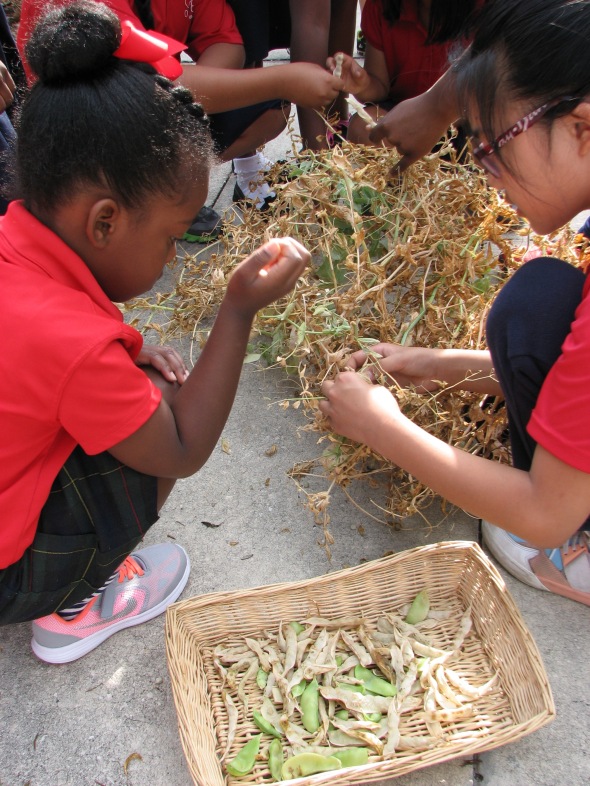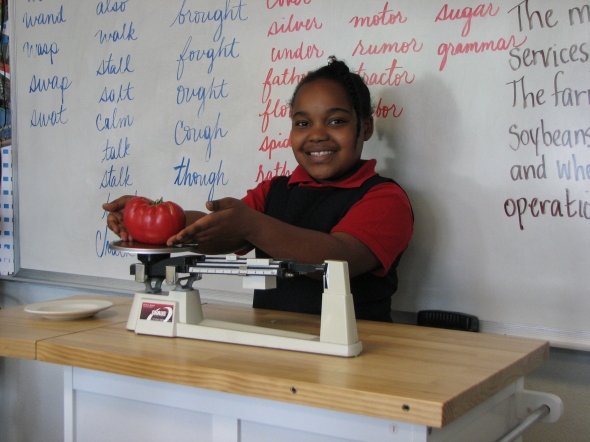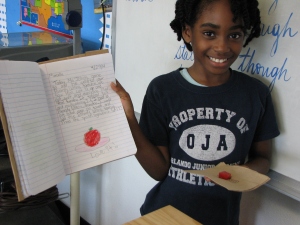It’s not surprising that many of life’s most valuable lessons only get half learned. It is simply too easy to divert to a different path rather than follow anything to it’s conclusion. Never have there been so many forks in life’s road. Food lessons are no different. The term “seed to plate” may be on the verge of being overused to the point of meaninglessness but it’s philosophy, which challenges our short attention span, is just beginning to get traction. Looking at the food on our plates and tracing that food’s path back to a point of origin (soil) can be mind boggling. For some, even considering that journey is an epiphany. School gardens not only encourage kids to think about that journey, they invite them to embark on it. By planting a seed and committing to its growth, students learn first hand what it means to bring food to the table. For some foods, a “seed to plate” experience isn’t that much of a challenge. Cherry tomatoes are pretty easy except that many don’t even make it to the kitchen, much less a plate. Some foods require a bit more tenacity. Our last post covered the wheat grown by Mrs. Madrid’s first graders. This morning some of that wheat was finally ground into flour and made it to the plate in the form of pasta.
(Full disclosure: Much of our wheat is still green and not quite ready to harvest and Friday is the last day of school. Bummer. So even though we harvested some of our grain and included it in our recipe, our ingredients were supplemented by a bag of spelt berries.)
These first graders KNOW now what it takes for a seed of wheat that they planted in the fall to wind up as pasta on a plate in the spring. They have imagined it, seen it, smelled it, touched it, and this morning, tasted it. And it was good. All of it.
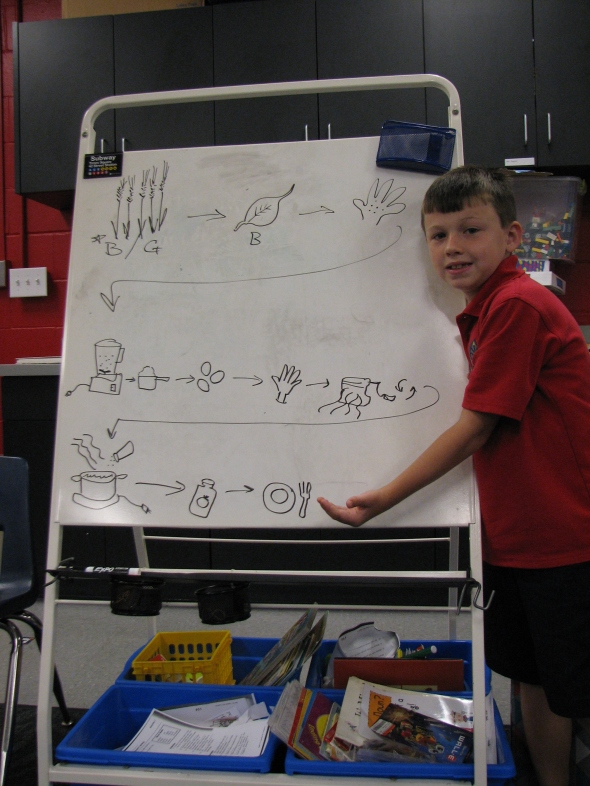
Our visual plan

Harvest

Threshing on a small scale

Gathering basil for the pasta and flowers for the table.

Preparing the “Volcano”

Kneading

Pasta machine
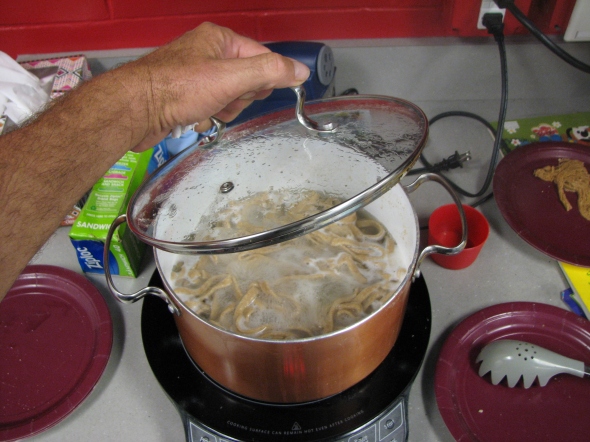
Almost ready

Yum.


